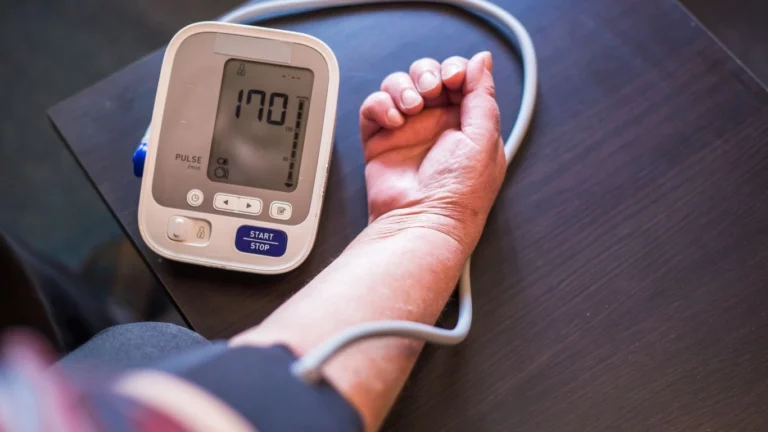How Asthma Affects Lung Development in Kids 🫁
Asthma is one of those conditions that we hear about all the time, especially when it comes to kids. If you’ve got a little one with asthma, you probably know the struggle – the coughing, wheezing, and the whole “can’t catch their breath” thing. But here’s the thing that doesn’t always get enough attention: asthma can mess with how a child’s lungs develop. And as much as it’s important to know how to handle an asthma attack, it’s just as important to understand how asthma affects their long-term lung health.
So, let’s chat about how asthma impacts lung development in kids, what parents need to know, and how to make sure your child is getting the care they need.
What’s Asthma, Anyway? 🤔

Before we get too deep, let’s quickly talk about asthma. It’s basically a chronic condition where the airways in your lungs get inflamed, making it harder to breathe. If your kid has asthma, you’ve probably noticed that certain things – like pollen, dust, or even a cold – can make their symptoms worse. And the struggle isn’t just about feeling sick; it’s about how this constant inflammation can affect their lung growth.
How Does Asthma Impact Lung Development? 🫁

Alright, here’s where it gets a little more serious. Kids’ lungs are still growing, and asthma can throw a wrench in that. So, how exactly does asthma mess with their lung development? Let’s break it down:
1. Delayed Lung Growth
The lungs of a child with asthma don’t grow quite the same way as they should. Asthma can delay lung development, meaning their lungs might not reach full capacity. This could affect how well they breathe as they grow older. Think of it like if you were building a house but ran out of time before you could finish all the rooms. Their lungs are built, but they’re not as big or strong as they could be.
2. Airway Remodeling
Ever hear the term “airway remodeling”? It’s one of those medical terms that sounds a lot scarier than it is. Basically, it’s when the airways in the lungs get permanently thicker and narrower from all the inflammation caused by asthma. Over time, this can make it even harder for your kid to breathe. It’s like their airways are being “renovated,” but not in a good way.
3. More Respiratory Infections
If your child has asthma, they’re more likely to catch things like bronchitis or pneumonia. And these infections? Yeah, they don’t just go away easily. They can make asthma worse, which ends up affecting lung development. So, it’s not just the asthma itself that causes issues; it’s the stuff that comes with it.
4. Risk for Lung Problems Later in Life
Now, here’s something to think about: even if your child’s asthma gets better over time, the damage from it can stick around. Kids who struggle with asthma as they grow may end up with less-than-ideal lung function in adulthood. That’s a real concern when it comes to asthma because those long-term effects could lead to other issues, like COPD, when they’re older.
Troubleshooting Common Asthma Issues in Kids 🔧

Now, as any parent with a kid who has asthma knows, it’s not all smooth sailing. There are a few bumps along the way. But don’t worry – I’ve got some tips to help troubleshoot some of the more common issues.
Issue #1: Getting Your Kid to Take Their Medicine
Let’s be real: kids don’t always love taking their asthma meds. Trust me, I’ve been there. But here’s a trick I’ve used that worked – try making it part of their routine. Maybe after breakfast or right before bed, just like brushing teeth. It’s all about consistency. You can also try making it fun – get a cool-looking inhaler or reward them for sticking with their treatment.
Issue #2: Recognizing Symptoms Early
Catching asthma symptoms early is key to preventing a full-blown attack. Teach your kid to recognize signs like coughing, wheezing, or shortness of breath. I found it super helpful to keep a “symptom journal” of when my child had flare-ups, so we could spot patterns and stay on top of things before they got out of hand.
Issue #3: Handling Environmental Triggers
If your kid’s asthma is triggered by things like dust, pets, or smoke, the best thing you can do is create a trigger-free zone at home. I personally made sure our house was always clean, with air purifiers running in their room. And no smoking around the house! That made a huge difference in reducing flare-ups.
Real-Life Examples and Success Stories 💡

Case 1: Early Intervention Makes a Big Difference
Take Lily, for example. She was diagnosed with asthma at age 2. Her parents were on top of it from the start, sticking to her medication routine and monitoring her symptoms. By the time she was 10, Lily was living a normal, active life with minimal asthma issues. The key here was catching it early and staying consistent with her treatment.
Case 2: Overcoming Severe Asthma with the Right Care
Then there’s Jake. Jake had pretty severe asthma, and there were days it felt like his breathing just wouldn’t cooperate. But his parents didn’t give up. With the right meds and lifestyle changes, Jake’s asthma became more manageable. Sure, he still had some lung development delays, but he’s doing great now – running around, playing sports, and living life without constant asthma attacks.
Key Takeaways / Summary 📌
– Asthma can delay lung development in kids, leading to smaller lungs and potential long-term lung issues.
– Airway remodeling from chronic inflammation can cause permanent changes in the airways, making breathing harder.
– Consistent asthma management, including meds and avoiding triggers, is crucial for reducing long-term lung damage.
– While some kids outgrow asthma, severe cases can lead to permanent lung problems later in life.
FAQs ❓
Q1: Can asthma be cured?
No, asthma doesn’t have a cure, but with the right treatment, it can be managed effectively. Think of it like a chronic condition that’s completely doable with the right approach.
Q2: When do kids’ lungs fully develop?
Kids’ lungs are pretty much fully developed by age 18, though they can keep getting stronger into their mid-20s.
Q3: How do I reduce asthma triggers at home?
You can cut back on dust, pet dander, and smoke, plus use air purifiers to keep the air cleaner. It’s all about making the environment as asthma-friendly as possible.
Q4: Can asthma cause permanent lung damage?
Yes, if asthma is left untreated or poorly managed, it can cause lasting lung issues like decreased lung capacity.
References 📚
– Asthma and Lung Development in Children – National Heart, Lung, and Blood Institute
– Understanding Asthma – American Lung Association
– Asthma Management in Children – Mayo Clinic
Disclaimer ⚠️
This article is meant to provide general information, but it’s not a replacement for medical advice. Always check in with your healthcare provider to make sure you’re on the right track for managing your child’s asthma.
Call to Action 📝
Got a kid with asthma? Don’t wait for things to get worse. Talk to your child’s doctor, stay on top of treatment, and make sure their environment is as asthma-friendly as possible. If you found this helpful, share it with other parents – let’s spread the word and help more kids breathe easy!

Dr. Gwenna Aazee is a board-certified Internal Medicine Physician with a special focus on hypertension management, chronic disease prevention, and patient education. With years of experience in both clinical practice and medical writing, she’s passionate about turning evidence-based medicine into accessible, actionable advice. Through her work at Healthusias.com, Dr. Aazee empowers readers to take charge of their health with confidence and clarity. Off the clock, she enjoys deep dives into nutrition research, long walks with her rescue pup, and simplifying medical jargon one article at a time.






